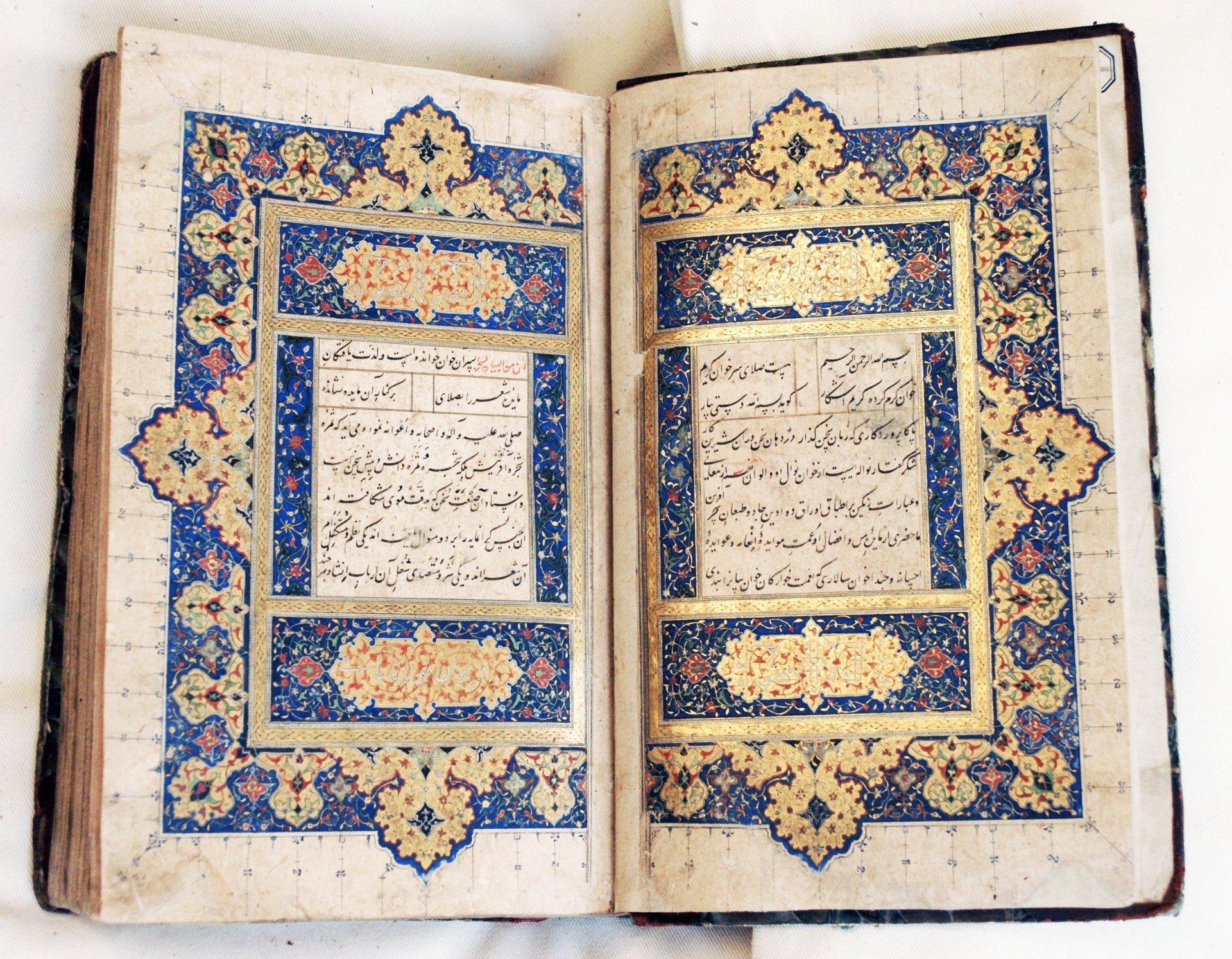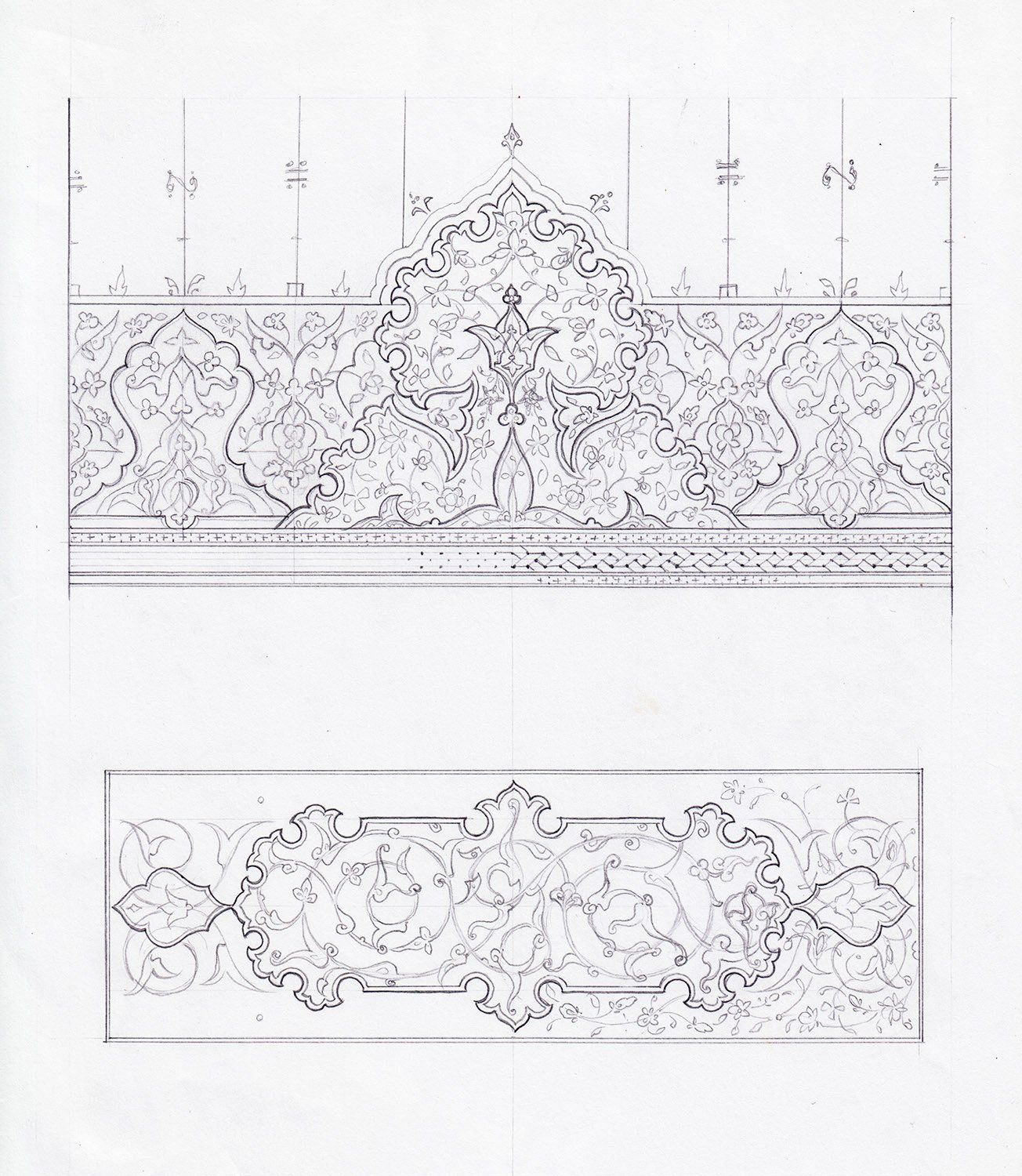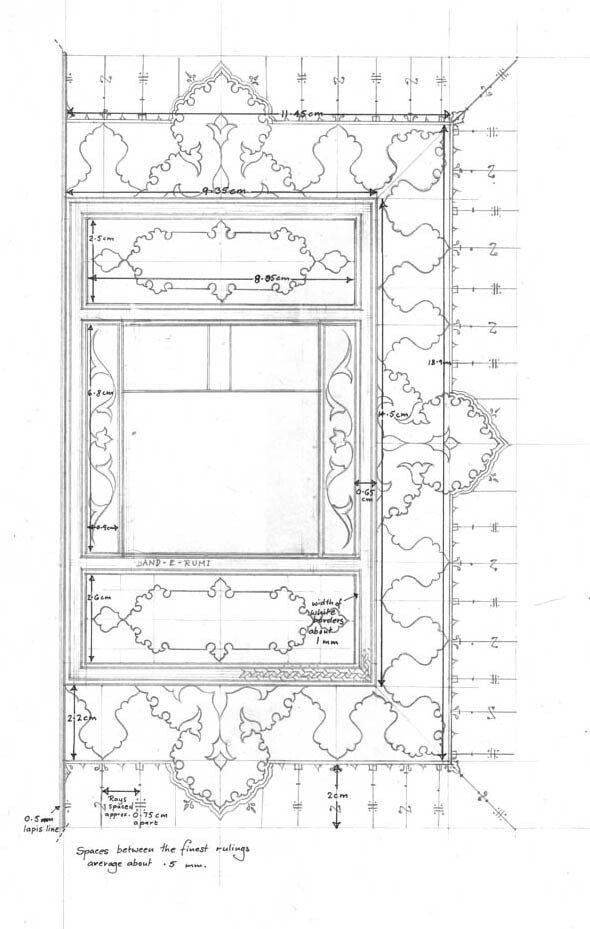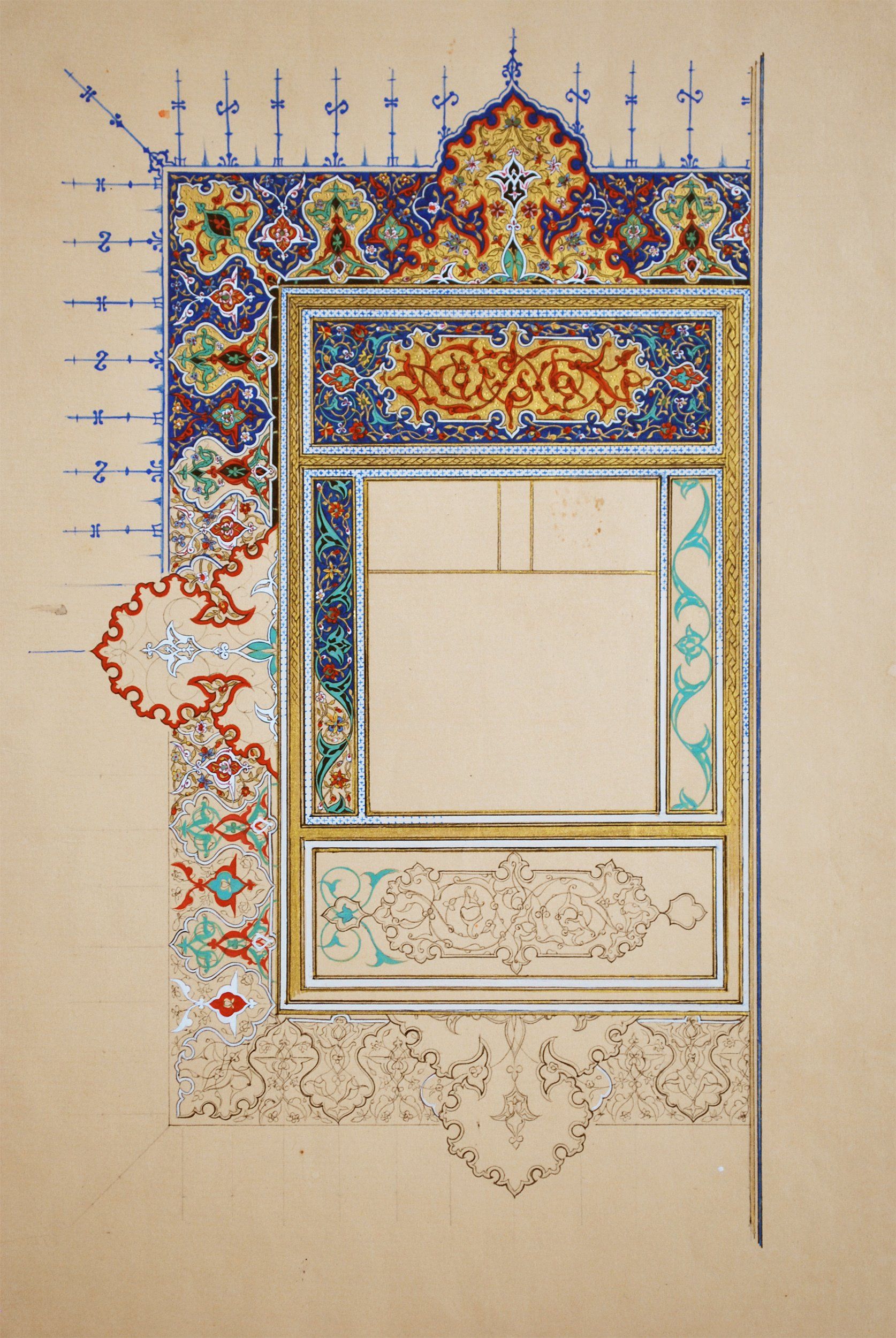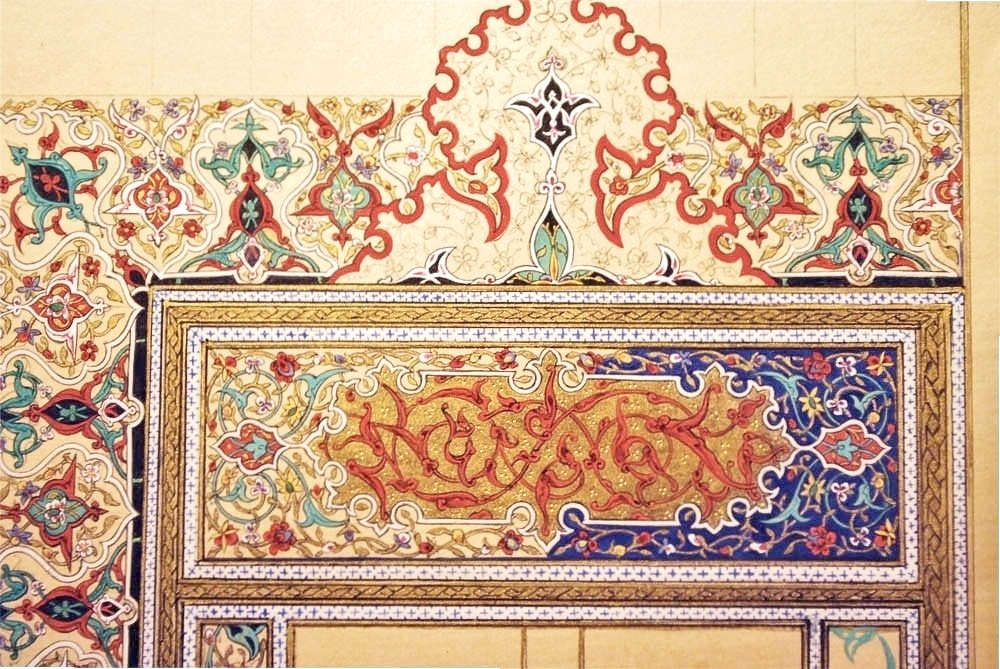ISLAMIC ILLUMINATION
Examining high quality historical manuscripts reveals a great deal about the design structure, working methods, and materials employed by artists and craftsmen in the princely ateliers. It also teaches us about the different styles, depending on the geographical location and historical period of the patrons.
I use non-invasive visual methods of analysis, including observing the deteriation of pigments, measuring and drawing, and photography. In re-creating sections of folios using methods and materials authentic to the period, I seek to gain a more thorough understanding of the art of the illuminator.
The book is a copy of a collection of poems by Jami, a 14th century Sufi mystic. This manuscript was completed in Herat in 1534 -5 for a princely patron, and is now part of the collection of the School of Oriental and African Studies, University of London.
The folios measure H. 23.5cm. X W.14.5cm., the illumination block on each folio are H. 19cm. X W.7.5cm. The re-creation is to scale. Below is a visual description of the processes.
RE-CREATION OF THE ILLUMINATED PAGE
FILL WHITE AND GOLD LINES
White and gold lines filled in and burnished
- The paper was lightly dyed with henna, sized with gum Arabic solution, and burnished.
- Lines are rulled first with black pigment and a ruling pen.
- The pattern-drawing is done with black pigment and a fine brush.
- Design elements in green, red and white are blocked in first.
- The lapis lazuli base is added last.
- The pallette consist of ground 24 ct. gold, lapis lazuli, copper verdigris, lead white and purified cinnabar.
- The colours and gold are polished with an agate burnisher after application.
- Pricking the surfaces with a stylus adds texture to the design.
